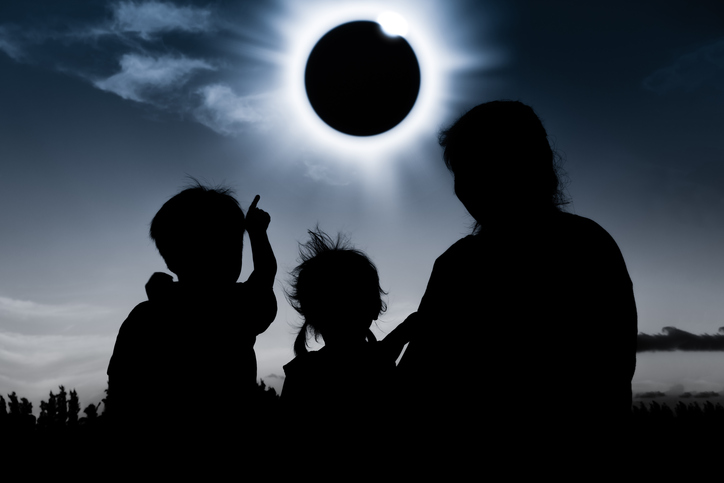
How the Solar Eclipse Will Affect Grid Reliability
Urjanet Inc | August 17, 2017 | Energy & Sustainability
On August 21st, a total solar eclipse will sweep across America, casting millions of people in temporary darkness, disrupting traffic and straining cellular networks. But the biggest disruptor during the spectacle will be power loss. Based on a Bloomberg calculation of grid forecasts, more than 9,000 megawatts of solar power may go down. That’s the equivalent of about nine nuclear reactors.
PJM Interconnection LLC, operator of the nation’s largest power grid covering the Eastern seaboard, estimated the eclipse could take out as much as 2,500 megawatts of solar generation on its system between 1:30 pm and 3:40 pm. North Carolina, California and New Jersey may bear the brunt with the greatest numbers of panels installed. PJM said rooftop solar panels will account for 80 percent of the anticipated outages.
“Our solar plants are going to lose over half of their ability to generate electricity during the two to two and a half hours that the eclipse will be impacting our area,” says Steven Greenlee, spokesperson for the California Independent System Operator (CAISO).
The North American Electric Reliability Corporation (NERC) says it does not expect the eclipse to create reliability issues for the bulk power system. Over the past few months, CAISO — which manages 80 percent of California’s electric flow — has been busy seeking advice from German solar facilities. During a 2015 solar eclipse that passed over Europe, 80 percent of Germany’s sunlight was cut off. For a country whose electricity is 40 percent powered by solar, the eclipse was expected to hit hard. But despite disturbance in solar production, the eclipse came and went without destabilizing the grid. Germany had prepared by dialing up its fossil fuel, nuclear and hydro power, while also asking four energy-hogging aluminum smelters to temporarily dial down their power use.
With the sun dimmed, more than 100 million solar panels are expected to be affected. However, most energy consumers will not notice anything out of the ordinary; it will be a normal day as far as power generation is concerned. The eclipse will merely appear as a blip on the grid.
“Blackouts are not expected,” said Coyne. “The grid has built-in redundancies that include a variety of other fuels such as coal, hydro, natural gas, nuclear and wind. Grid operators carry spinning reserves [i.e. extra generating capacity that’s available by increasing power output of generators that are already connected to the system] to account for load fluctuations and contingencies on a day-to-day basis.”
Still, the eclipse will test the reliability of solar generation on a national scale and challenge the preparedness of operators like CAISO. Over the years, CAISO and other electricity operators have been trying to resolve the obvious limitations the industry faces during major events like eclipses. Francis O’Sullivan, research director at the MIT Energy Initiative, predicts that following the eclipse, there will be an “increased focus on ensuring that we have backup that’s more flexible.”
As concerns are raised and subsequently appeased over the reliability of an energy grid dependent on solar, energy managers may be reminded of the cost savings potential in renewable energy procurement. To help with the decision-making process, procurement managers stand to gain more clarity from increased visibility into their utility data. Having detailed historical data allows procurement managers to analyze consumption trends and better forecast future energy consumption. For instance, Cox Enterprises utilizes visibility into consumption to evaluate granular purchasing options and take advantage of more tailored energy products like solar.
Watch the case study to learn how Cox Enterprises saw 10 to 30 percent in savings from added data visibility.
The next major US eclipse will occur on April 8, 2024, at which time Texas is expected to take the biggest energy hit, due to solar industry growth projections and the path of the eclipse itself. By that time, our reliance on solar energy will likely be much greater than it is today, placing even more strain on the grid. As we transition to this clean form of energy, eclipses are poised to be increasingly disruptive events.
However, that’s not to say solar energy isn’t here to stay. In fact, this event’s impact on the grid will only reinforce the introduction of solar as a safe, clean and reliable energy source, hopefully giving experts a better understanding of whether intermittencies necessarily impede solar expansion across the country.
Urjanet’s Utility Data Platform can help solar providers expand their reach with confidence. To learn more, download our eBook, Shedding Light on Solar: How Utility Data Drives Revenue Growth.
Related Resources:
- The Atlanta Smart Grid
- The Untapped Potential of IoT and Sustainability
- Webinar: The Sustainability Ecosystem
If you like what you’re reading, why not subscribe?
About Urjanet Inc
Urjanet, the global leader in utility data aggregation, simplifies how organizations access and use utility data, enabling them to focus on their business. Our technology collects, processes, and delivers data from over 6,500 electric, natural gas, water, waste, telecom, and cable utilities worldwide.
You May Also Like
Support Business Continuity by Embracing ESG
Honor Donnie | March 18, 2022 | Energy & Sustainability
